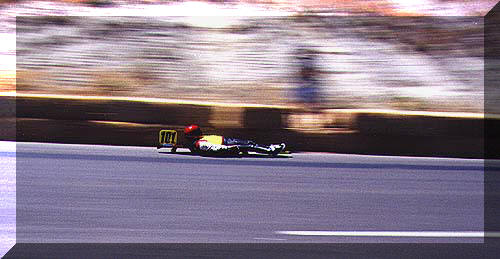| |
Motion

 Hewitt's
CP Surf Unit I: Mechanics Hewitt's
CP Surf Unit I: Mechanics
2.1 MOTION IS RELATIVE
-
Relative Motion
- What does the phrase "motion is relative" mean? Find out in this
online tutorial from the Department of Physics at the University of
Illinois at Urbana-Champaign.
- Foucault's
Pendulum
- Most of the time, the relative motion of the earth does not affect
our perception of motion. However, in 1848, Leon Foucault discovered
that when a large pendulum swings, the earth appears to "move under it."
Learn more about Foucault's pendulum from Dr. Kruszelnicki's fact-filled
site.
2.2 SPEED
-
Average vs. Instantaneous Speed What is the difference between
average speed and instantaneous speed? This GIF animation from the
Multimedia Physics Studios should clear up any confusion
2.3 VELOCITY
- Velocity
Learn all about velocity in this chapter from the
Learn Physics
Today online physics tutorial. It includes graphics, animation, and
self-check questions.
-
Speed and Velocity What's the difference between speed and velocity?
Find out by exploring this interactive tutorial from
The Physics Classroom
-
Hot Wheels Track Check out the velocity and acceleration vectors of
a Hot Wheels car as it moves around the race track in this GIF animation
from the
Multimedia Physics Studios
2.4 ACCELERATION
-
Accelerating Cars
- Which car is accelerating? If necessary, review the definition of
acceleration. animation from the
Multimedia Physics Studios.
- Accelerationarn
all about acceleration in this chapter from theLearn
Physics Today online physics tutorial. It includes graphics,
animation, and self-check questions.
2.5 FREE FALL: HOW FAST
-
Free Fall and the Acceleration of Gravity Free fall is defined as
"motion under the influence of gravitational force only." Find out more
about free fall in this interactive tutorial from
The Physics Classroom.
2.6 FREE FALL: HOW FAR
-
How fast? and How far? How fast something moves is entirely
different from how far it moves. Learn more about fast, far, and free
fall in this helpful interactive tutorial from
The Physics Classroom
2.7 GRAPHS OF MOTION
-
Describing Motion with Position vs. Time Graphs Need help
understanding position vs. time graphs? This is the place to go! You'll
find everything you need in this interactive tutorial from
The Physics Classroom. Topics include:
-
-
Describing Motion with Velocity vs. Time Graphs The place to go for
help with velocity vs. time graphs. You'll find everything you need in
this interactive tutorial from
The Physics Classroom. Topics include:
-
-
The Meaning of Shape for a v-t Graph
-
The Meaning of Slope for a v-t Graph
-
Relating the Shape to the Motion
-
Determining the Slope on a v-t Graph
-
Determining the Area on a v-t Graph
-
Ticker Tape Motion This GIF animation from the
Multimedia Physics Studios displays a ball moving across a
ticker tape diagram with corresponding graphs of postion, velocity,
and acceleration. Variations include:
-
-
Constant PositiveVelocity
-
Constant Negative Velocity
-
Positive Velocity with a Positive Acceleration
-
Positive Velocity with a Negative Acceleration
-
Negative Velocity with a Negative Acceleration
-
Negative Velocity with a Positive Acceleration
-
The Passing Lane Two cars race across the screen in this GIF
animation from the
Multimedia Physics Studios. Which car is accelerating? Look at the
speed vs. time graph for help. Also check out the same animation
featuring a
position vs. time graph.
-
The Stop Light A car at a stoplight is passed by another car moving
with constant velocity. If the car at the stoplight accelerates, can it
catch the other car? A GIF animation from the
Multimedia Physics Studios.
-
Two Stage Rocket A two stage rocket only has fuel for 10 seconds.
What does its graph of motion look like after 20 seconds? A GIF
animation from the
Multimedia Physics Studios.
2.8 AIR RESISTANCE AND FALLING OBJECTS
-
The Elephant and The Feather Which falls faster in air, an elephant
or a feather? What if there's
no air resistance? Watch this GIF animation from the
Multimedia Physics Studios.
-
Free Fall and Air Resistance
- Learn more about air resistance and falling objects in this interactive
tutorial from
The
Physics Classroom.
2.9 HOW FAST, HOW FAR, HOW QUICKLY HOW FAST CHANGES
-
Acceleration The often confusing concept of acceleration is broken
down into simple rules of thumb in this helpful interactive tutorial
from
The Physics Classroom.
-
|